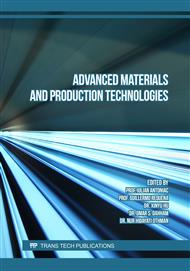p.67
p.87
p.93
p.103
p.115
p.129
p.135
p.147
p.157
Experimental Investigations on the Effect of Yarn Speed and Wrap Angle on Yarn-Solid and Yarn-Yarn Friction using Warp Knitting Machines
Abstract:
Warp knitting is appointed as a manufacturing method for high-performance and high-quality textiles due to its versatility and production speed. To ensure a continuous and error-free manufacturing process under highly dynamic production conditions, a high level of knowledge of the yarn and machine interaction is required. Mechanical stresses from the machine are transferred to the yarn via friction points, as well as during the stitching process from one yarn to another, where the yarn is subjected to high stresses.Therefore, the focus of this research is the investigation of the friction between the yarn and yarn guiding elements and the friction between the yarns themselves during the stitch formation. For this reason, all contact points between yarn and yarn guiding elements as well as between the yarns themselves are examined and classified. A test rig is set up to determine all occurring frictions as a function of various machine parameters.The knowledge gained and the derived analytical expressions between machine settings and occurring friction can thus become the basis for modeling the friction points of the warp knitting machine, which is also presented. Furthermore, based on the findings a design improvement of the machine can be achieved and the friction model can serve as part of a simulation model of the entire warp knitting machine, which will be the focus of further publications.
Info:
Periodical:
Pages:
115-126
Citation:
Online since:
December 2022
Price:
Сopyright:
© 2022 Trans Tech Publications Ltd. All Rights Reserved
Share:
Citation:


